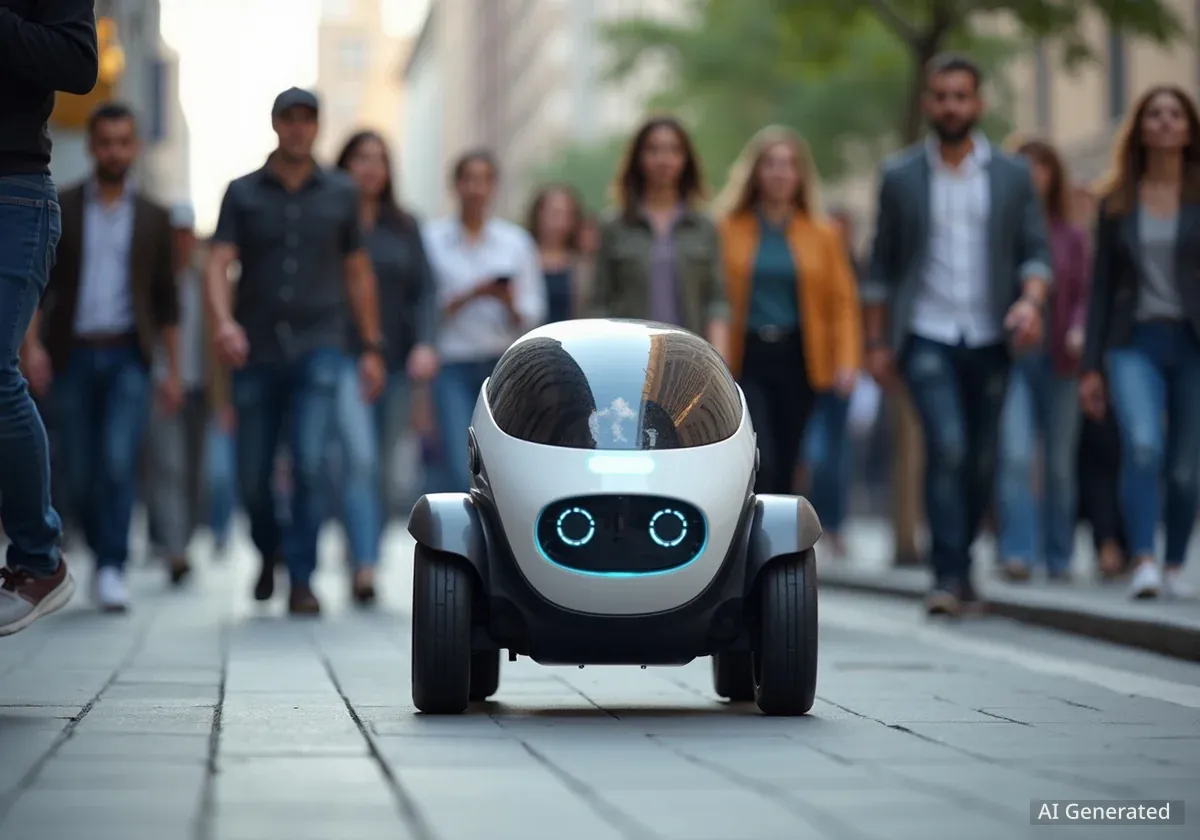Artificial intelligence is rapidly changing the business world, automating tasks and providing powerful data analysis. However, despite its advanced capabilities, AI cannot replicate the core qualities of human leadership that inspire teams, build trust, and drive meaningful innovation.
As organizations integrate more AI tools, the focus on distinctly human skills becomes more critical than ever. Leaders who cultivate these abilities will be better equipped to guide their teams through complex challenges and create resilient, high-performing workplaces.
Key Takeaways
- Artificial intelligence excels at processing data and optimizing tasks but lacks the essential qualities needed for effective human leadership.
- Five irreplaceable skills are empathy, contextual judgment, creative vision, humility, and the ability to foster genuine connection.
- Empathy allows leaders to build trust and psychological safety, which AI can only simulate, not genuinely feel.
- Contextual judgment involves weighing ethical, cultural, and relational factors that data analysis alone cannot capture.
- Leaders who focus on developing these human-centric skills will remain essential in an increasingly automated future.
The Distinction Between AI Processing and Human Leadership
Modern AI systems can analyze enormous datasets, predict market trends, and optimize logistical chains with incredible speed and accuracy. These tools are invaluable for enhancing efficiency and informing decisions. According to industry reports, global corporate investment in AI is projected to exceed $200 billion annually by 2026, highlighting its importance.
However, leadership is not simply about processing information. It involves motivating people, navigating uncertainty, and creating a shared sense of purpose. While an AI can suggest a course of action based on probabilities, it cannot inspire a team to pursue that course with passion and commitment. This is where human leadership remains indispensable.
AI in the Workplace
AI's role is typically focused on optimization and prediction. It can manage schedules, analyze performance metrics, and even draft communications. Yet, it operates without genuine understanding, emotion, or consciousness, which are the foundations of human interaction and leadership.
1. Empathy: The Core of Human Connection
Empathy is the ability to understand and share the feelings of another person. While AI can be programmed to recognize emotional cues from text or speech and provide a scripted response, it does not actually feel anything. This distinction is crucial in a leadership context.
A leader with genuine empathy can connect with their team members on a human level. This builds trust, fosters psychological safety, and improves overall team performance. Empathetic leaders are better at resolving conflicts, providing meaningful support, and creating an inclusive environment where everyone feels valued.
"AI can mimic sympathetic responses, but it lacks true empathy—the human ability to sense and connect with others’ emotions. Empathy builds trust, belonging and better workplace performance."
How to Develop Leadership Empathy
Cultivating empathy is an active process. Leaders can improve this skill through intentional practices such as:
- Active Listening: Paying full attention to what others are saying without planning a response.
- Asking Open-Ended Questions: Encouraging team members to share their perspectives and feelings in detail.
- Individualized Approach: Recognizing that each team member has unique motivations, challenges, and communication styles.
2. Contextual Judgment: Beyond Pure Data
AI is a master of data analysis, but it often lacks the ability to understand context. Human leaders provide contextual judgment, which involves weighing a complex mix of factors that are not easily quantifiable, such as company culture, historical precedents, ethical considerations, and interpersonal dynamics.
For example, an AI might analyze sales data and recommend closing a legacy product line to cut costs. A human leader, however, would consider the impact on loyal customers, the morale of the team that supports it, and the brand's reputation. This nuanced decision-making process is a hallmark of effective leadership.
The Limits of Algorithms
Algorithms make decisions based on the data they are trained on. They cannot account for unforeseen circumstances, ethical dilemmas, or the subtle human elements that influence a situation. Strong human judgment is needed to interpret and, when necessary, override AI-driven recommendations.
Developing strong judgment requires leaders to slow down, challenge their initial assumptions, and consider multiple perspectives. It involves moving beyond binary, right-or-wrong thinking and embracing the complexity of most business challenges.
3. Creativity and Meaning: Inspiring a Shared Purpose
Generative AI can create text, images, and code, but it cannot create meaning. True creativity in leadership is about crafting a compelling vision and connecting daily tasks to a larger purpose. This is what motivates people to do their best work.
Leaders inspire their teams by telling stories, articulating a clear mission, and showing how each individual's contribution matters. They create an emotional connection to the work that an algorithm cannot replicate. This sense of shared purpose is a powerful driver of engagement, innovation, and long-term success.
A leader's role is not just to manage tasks but to instill a sense of why the work is important. This builds a resilient culture where employees are motivated by more than just a paycheck.
4. Humility and Self-Awareness: The Strength in Vulnerability
AI operates with certainty based on its programming and data; it has no concept of self-doubt or humility. For human leaders, however, humility and self-awareness are significant strengths. Acknowledging one's limitations and being open to feedback are essential for growth and building trust.
Leaders who practice humility create an environment where it is safe to take risks, admit mistakes, and ask for help. By showing vulnerability, they empower their team members to do the same, which leads to greater collaboration and problem-solving.
Practices for Humble Leadership
- Actively Seek Feedback: Regularly ask your team for their honest perspectives on your leadership and decisions.
- Admit When You Are Wrong: Acknowledging mistakes builds credibility and shows respect for your team.
- Empower Others: Recognize that you do not have all the answers and trust your team's expertise.
This approach elevates the collective intelligence of the team and ensures that the best ideas, regardless of their source, are heard and considered.
5. Connection and Belonging: Building Authentic Relationships
Finally, AI can facilitate communication, but it cannot build genuine human relationships. A sense of belonging is a fundamental human need and a critical factor in workplace satisfaction and performance. Leaders are uniquely positioned to foster an environment where people feel seen, valued, and connected.
Building authentic relationships requires consistent, genuine effort. Simple actions can have a significant impact, such as checking in with team members about their well-being, celebrating both small and large achievements, and investing time in mentorship.
These moments of human connection create loyalty and resilience within a team, making it better equipped to handle stress and navigate change. In an era where remote and hybrid work can lead to feelings of isolation, a leader's ability to foster a sense of community is more important than ever. While AI can manage workflows, only a human can build a true team.





